What does it take to create a strong, healthy brand that lasts? More products? More customers? More efficient processes? Nope. The true potential of your brand doesn’t lie in your product innovation or your production chain; it’s in your people, specifically your employees. They’re the ones who lend their time, energy, bodies, and minds to your brand, and they will ultimately help you build it or abandon it. But in a market where competition is fierce, it’s harder to attract the right employees—and keep them united around a shared vision. But there’s one thing that can make it a lot easier: employer branding.
Here, we’ll cover the ins and outs of employer branding, and provide the toolkit you need to nurture your brand at every level. From your culture to your content strategy, this step-by-step guide will help you understand your employer brand, create a solid content strategy to tell great stories about it, and measure your success along the way.
If you want to attract the best and brightest talent in your field—and keep them around for the long run—this is the guide for you.
What Is Employer Branding?
Employer branding is the practice of sharing your story with job seekers, showing them who you are, what you believe in, and what you can offer them. By shining a light on what makes you unique through your culture and content, employer branding helps you turn your brand into a beacon. People who believe in your brand’s vision (and want to contribute to it) will come to you, instead of you chasing after them.
The traits that make you unique are what will bring the right people to your brand—if you can turn those traits into interesting stories.
This starts a transformative process. The better your hires, the stronger your community becomes. When people are happier, engaged, and aligned, they are more committed to your brand, which feeds into every aspect of your organization.
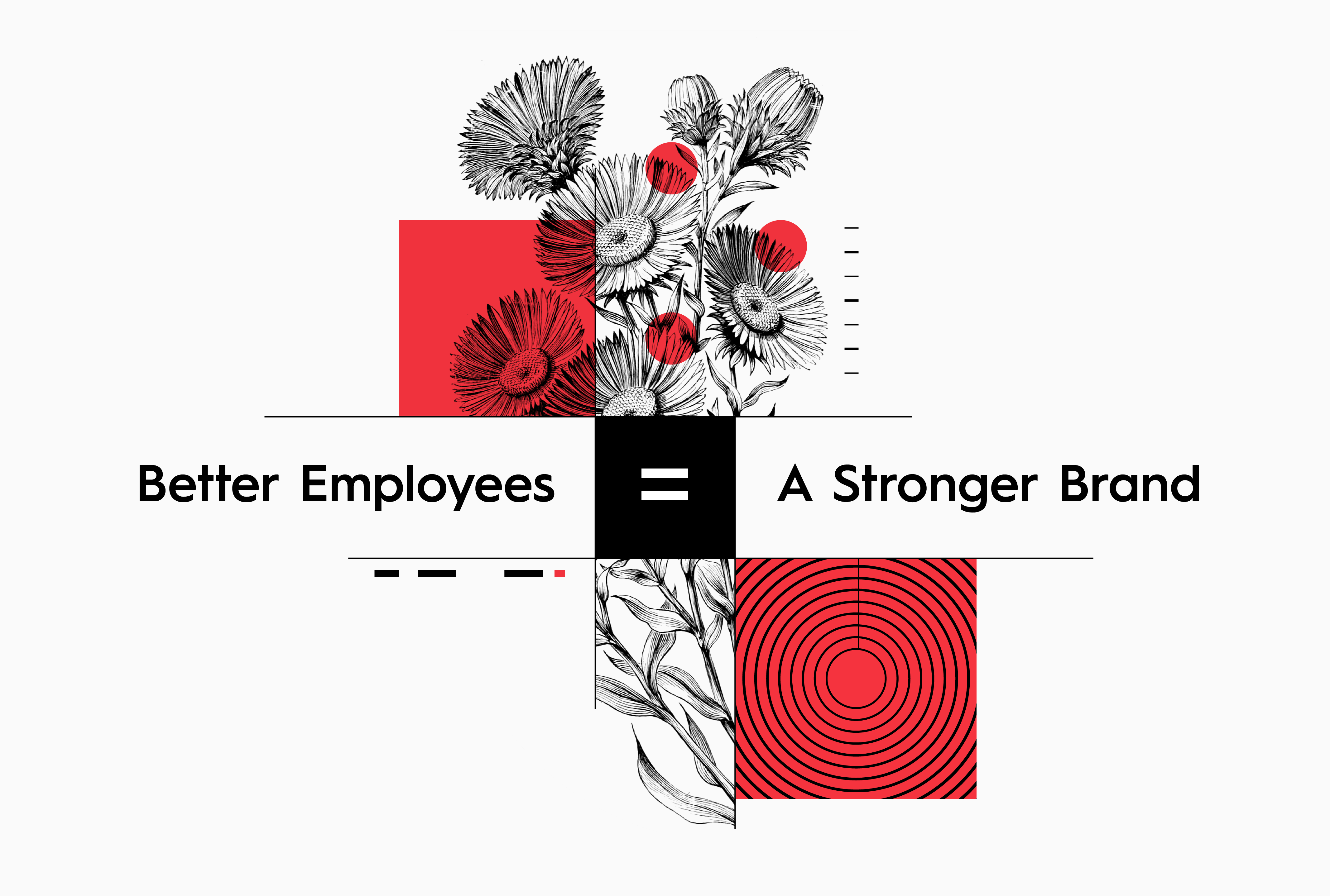
From product design, to customer service, to marketing, the more clear and confident your brand is about the work you do, the stronger your work and brand becomes, and the more people will want to work with and for you—and, of course, buy from you.
Why Does Employer Branding Matter?
The job hunt has changed drastically over the last decade. Now, brands have more competition than ever, and employees have higher expectations. Brands that want to find and keep the best and brightest need to be aware of the major trends that are affecting hiring—and strategize around them.
Trend 1: Jobs are easier to find—and leave.
No matter the industry, social media has made it much easier for job seekers to find their employment match. Through sites like LinkedIn, Monster, or Twitter, people can cast a wider net and interact more easily with potential employers, giving them more access to opportunities that might have been previously blocked.
Tech has also made it easier to work remotely, removing the geographic barriers that once limited people’s options. That means brands aren’t just competing with local companies for talent; they may be competing on a national or even global scale.
⇒ 91% of candidates seek out at least one online or offline resource to evaluate an employer’s brand before applying for a job.
—HubSpot Employer Brand Research 2020
Trend 2: Employees want more than money.
Today, people want to align themselves with brands they believe in, to do meaningful work that’s worth their time and commitment. Beyond the standard benefits, things like culture, community, purpose, personal development, and growth are all deciding factors. If your brand hasn’t invested in these areas, you’ll find it much harder to entice people to work for you.
⇒ 56% of adults place culture above salary when it comes to job satisfaction.
—Glassdoor’s Mission & Culture Survey 2019
Trend 3: How you treat your employees matters—to everyone.
Whereas a brand’s “audience” was once just its customers, social media has increased transparency all around. Now a brand is communicating with a larger ecosystem, including employees, potential employees, customers, vendors, and industry. Bad behavior in any of those spheres will affect a brand’s reputation in all of them.
Now that sites like Glassdoor or Reddit empower employees to speak out, there is even more accountability. You may have a 5-star customer service rating, but if you notoriously mistreat your employees, people won’t want to support you. (For the record, the way brands have treated their employees during this pandemic will follow them long after it’s over.)
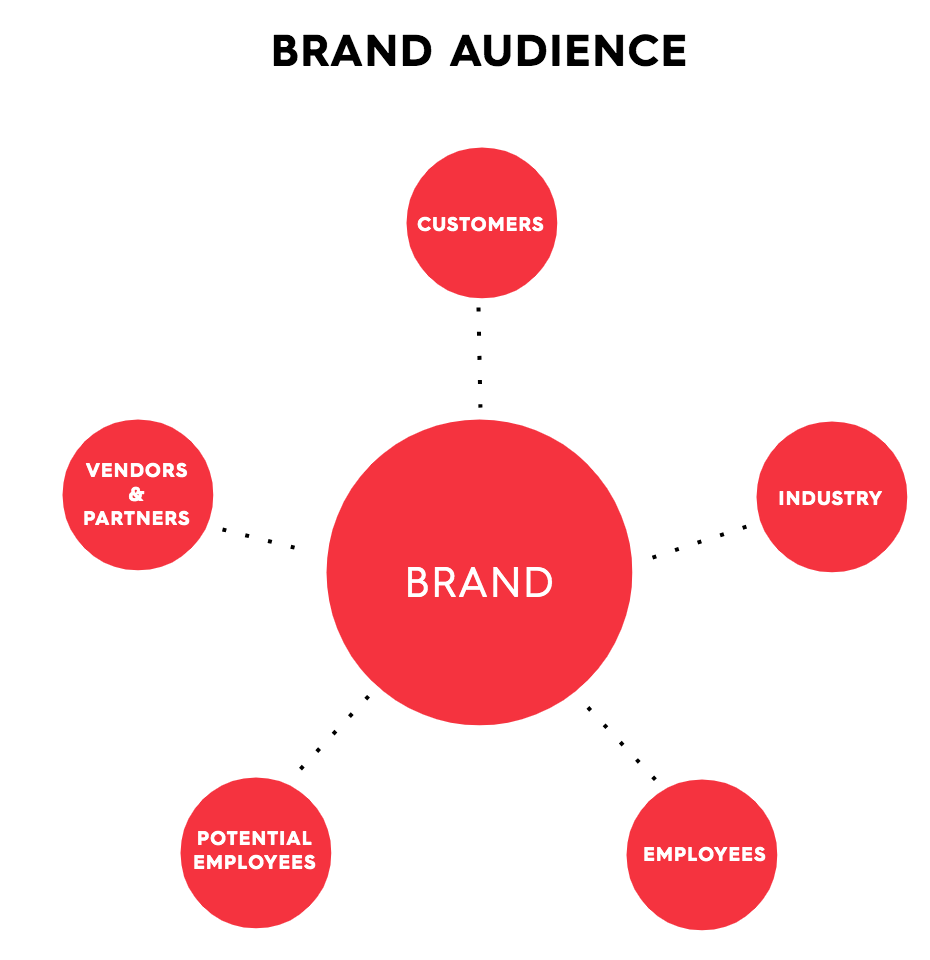
Ultimately, these trends have forced us into a more sophisticated era of recruiting. If you want a strong brand, you need to invest in your people. Nurture your employees, create a place where people are proud to work, and they will help you create the brand you want. Luckily, focusing on employer branding is the most effective way to do this.
The best employer branding starts with your people. Take care of them, and they’ll help you create the brand you want.
What Is the ROI of Employer Branding?
There are plenty of reasons to invest in employer branding, and plenty of ways doing so benefits both your brand and your employees. From happier people to higher profits, you can enjoy a better ROI in…
- Recruiting: The stronger your brand, the easier it will be to attract the people who share your same values and want to support your mission. This means you’ll reduce the energy it takes to find great candidates—and reduce your risk of a bad hire. According to the U.S. Department of Labor, a bad hire can cost up to 30% of the employee’s first-year salary.
- Retention: The core elements of your employer brand, like your culture, communication, and values, can be a big reason why people join your company—and a big reason they leave. According to Glassdoor’s 2019 Mission and Culture Survey, a company’s mission will inspire 64% of employees to stay in their job.
- Engagement: With a strong employer brand, people are more motivated and engaged, which increases your brand’s productivity and profit. Gallup research found that companies with the highest engagement experienced 17% more productivity, 20% higher sales, and 41% lower absenteeism.
- Referrals: The better your employer brand is, the more likely your current and former employees are to refer people, helping to increase the quality of hires and reduce the time it takes to find them. According to CareerBuilder, 82% of employers rated employee referrals above all other sources for generating the best return on investment.
Remember: It’s not just about what your employer brand can add; not having one at all can cost plenty, too.
⇒ 77% of companies focus on employee experience to increase retention.
—LinkedIn 2020 Global Talent Trends Survey
What Are the Keys to a Good Employer Brand?
A good employer brand is more than a paid lunch now and then. It’s about who you are and how you act. This is where many brands go wrong. They look at their brand’s individual components (e.g., benefits, office space, culture, etc.), forgetting that none of those things matter if people don’t trust your brand as a whole.
Thus, creating a strong employer brand means you need to cultivate the traits that people respect, whether you’re negotiating a salary, celebrating an event, or onboarding a new employee.
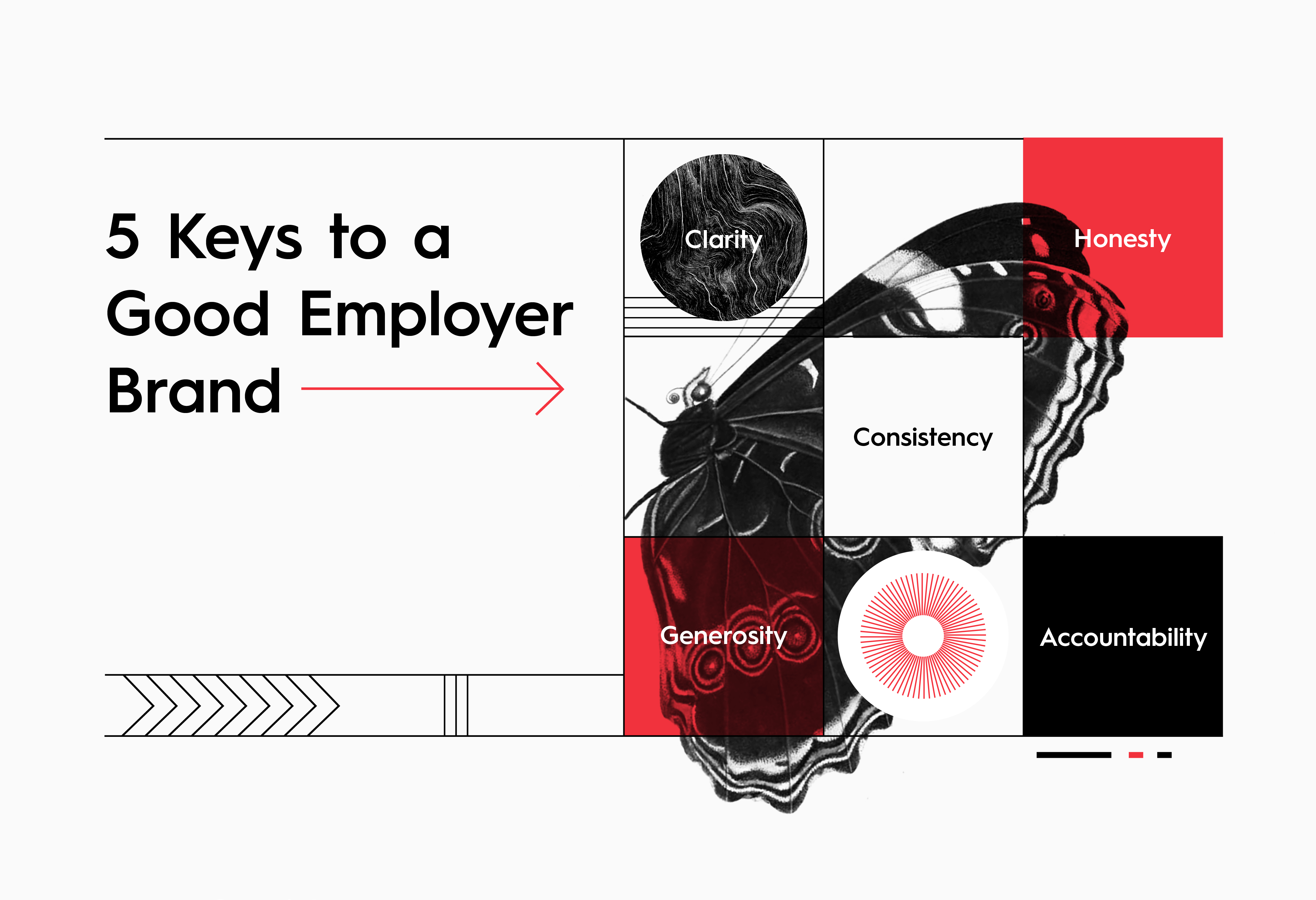
If you can demonstrate these in concrete ways, you will become an employer brand with not just employees but true fans.
⇒ 59.3% of organizations have no employer brand strategy or are unsure if they have one.
—iHire 2019 Employer Branding Pulse Survey
Find out how you can to bring these traits to life in your day-to-day work.
How to Strengthen Your Employer Branding
Let’s dive into the steps you can take to review your employer brand, understand how other people perceive your brand, and learn to communicate it more effectively.
Whether you’ve already done some of this work or you’re starting from scratch, it’s important to take an intentional approach to this work. Thus, we recommend following these steps in order to get the full insight you need to create a solid employer branding strategy.
Before you start! Download our free employer brand toolkit for the tools and templates you need to build your employer brand from the ground up.
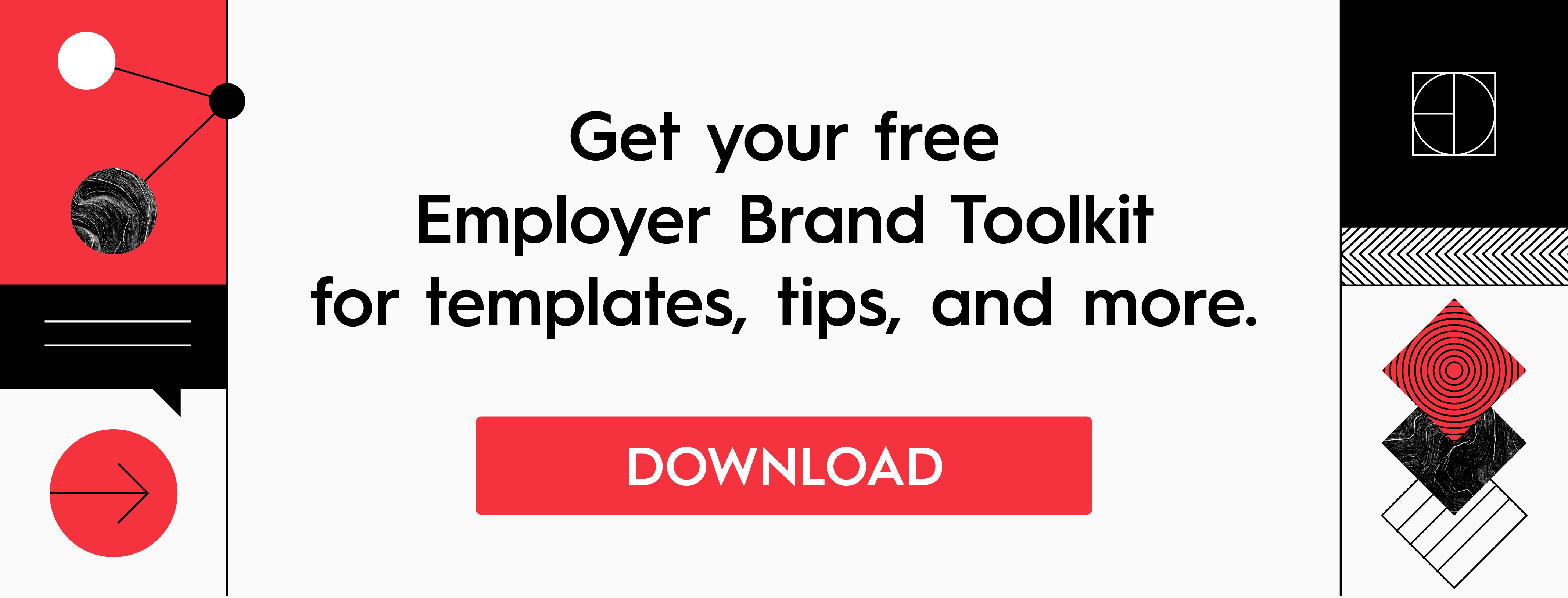
Part 1: Analyzing Your Employer Brand
Before you start coming up with employer branding content ideas, you need to take an intimate look at the core of your employer brand: Who are you? What do you care about? How does your culture reflect that? What do other people think about you? This is the crucial information you need to tell stories that effectively communicate your employer brand. Thus, we start with steps to help you analyze your employer brand from an internal and external perspective.
Step 1: Articulate Your Brand Heart
The core of your employer brand isn’t your benefits or your cushy office space; it’s what you believe and how you treat people. Whether your brand is trying to make the world’s best cupcake or provide the best customer service platform, there’s still a core motivation that drives you, and it probably has to do with how your brand is helping other humans improve their lives.
Your Brand Heart is the articulation of this drive, comprised of your:
- Purpose: Why do you exist?
- Vision: What future do you want to help create? What does the future look like?
- Mission: What are you here to do? How do you create that future?
- Values: What principles guide your behavior?
Together, these principles function as your company’s North Star, influencing the way you treat your people and the decisions you make about your business.
⇒ Purpose-driven companies financially outperform the market by 42%.
—2018 DDI Frontline Leader Project
Without a strong Brand Heart, it will be challenging to create an authentic employer brand, which is why you need to clarify your core beliefs.
HOW TO DO IT
Learn more about why purpose is the secret to a strong employer brand, and use the Brand Heart workbook in your toolkit to identify and articulate your purpose, vision, mission, and value.

⇒ 79% of people would consider a company’s mission and purpose before applying for a position.
—Glassdoor’s Mission & Culture Survey 2019
Step 2: Look at Your Culture
Your employer brand is the summation of many parts—but your culture is one of the most significant parts. The way you care for your employees, the way you communicate with them, the way you interact with them—these things are all a piece of your culture, and they speak volumes about who you are and what people can expect from your employer brand.
Culture can also be your saving grace in a competitive hiring landscape. If you can’t match your competitors’ salaries, your culture can make you a more attractive employer, and it can keep people engaged once they do join your team.
⇒ 77% of people would consider a company’s culture before applying for a job there.
⇒ 65% of employees cite company culture as one of the main reasons they stay in their job.
—Glassdoor’s Mission & Culture Survey 2019
That said, if your culture isn’t something to brag about, you’ll have trouble building a strong employer brand. And don’t think that you can fake it till you make it. The more you misrepresent who you are, the more damage you’ll do to yourself in the long run.
You can’t fake your culture. The only way to build a better employer brand is to be honest about the one you have.
A good brand culture is the extension of a strong Brand Heart, which is why it’s crucial to make sure you are clear on your values—and working to align every aspect of your culture to them.
While you can’t wave a magic wand and change your culture overnight, you can and should take an honest look at each of the four core culture pillars in your company.
- Benefits + Perks: How do you compensate and care for people?
- Learning: How do you communicate as a culture?
- Community: How do you encourage socialization and nurture strong relationships?
- Environment: What is your physical work space like?
The more clarity you have about your culture, the better you can position your employer brand.
HOW TO DO IT
Follow our guide to nurture the core elements of your brand culture.
Step 3: Conduct an Employer Brand Audit
You may think you know your own employer brand, but to truly connect with other people, you need to know what they think about it. You can get this insight by soliciting honest feedback from the people who matter most: your prospective, current, and former employees.
It may seem tiresome to do this work, but it’s the only way to identify your strengths and weaknesses, prioritize what needs improvement, and figure out how to tell your employer brand story in a memorable and meaningful way.
⇒ Employees who don’t believe action will be taken based on their feedback are 7X more likely to be disengaged.
—Glint’s 2020 Turn Feedback into Action Guide
One extra bonus: Reaching out to people proactively shows that you value their feedback and contribution to your brand.
HOW TO DO IT
Use the Employer Brand Audit Template in your toolkit, which includes Google form survey templates to poll different groups, and follow our step-by-step guide to audit your brand.
Step 4: Analyze Your Competition
The job market is more competitive than ever. Naturally, you want to outshine your competitors to attract the best talent in your industry, and you want to keep your current employees happy enough to stay with you long term. But if your competition is telling better stories, you’ll get lost in the noise.
The good news is that the secret to outshining your competition lies in their approach and strategy. By auditing how they present themselves—their messaging, channels, benefits, etc.—you can figure out how to differentiate yourself.
Also, remember that positioning yourself well isn’t about reaching the most people; it’s about reaching the right people.
[bctt tweet=”Your employer brand isn’t about appealing to 1,000 applicants; it’s about finding the one perfect person.” username=”columnfive”]
Ultimately, you want to build a long-term relationship with employees who share your values, goals, and passions. Telling interesting, unique employer brand stories is the secret to doing that.
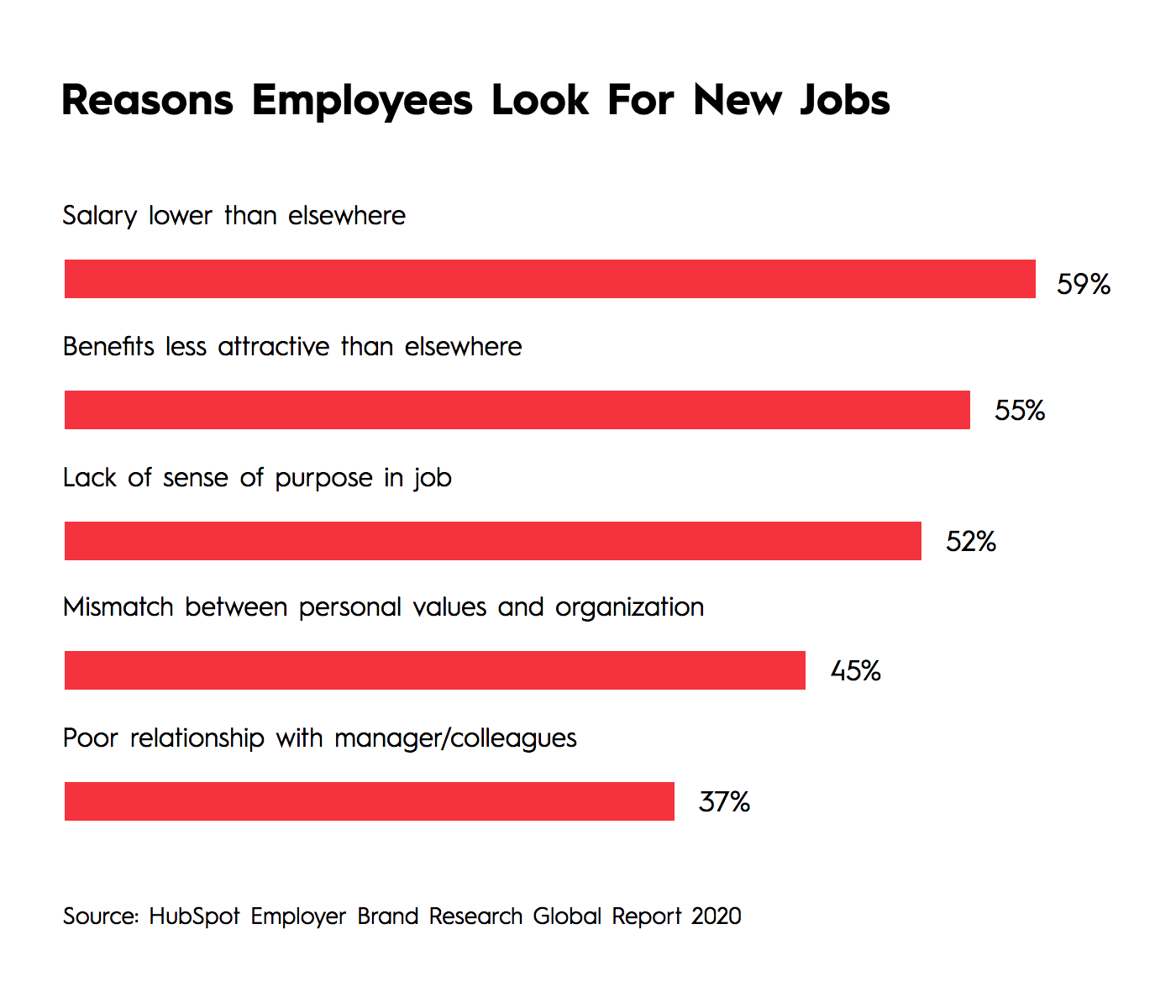
HOW TO DO IT
Use the Employer Brand Competitive Analysis Template in your toolkit, and follow our guide to analyze your competition.
Step 5: Map Your Employee Journey
Just as it is with your consumer-facing brand, there are many stages of the employee experience, including:
- Awareness
- Consideration
- Decision
- Employment
- Post-Employment
Naturally, your goal is to move people through those stages, from prospective employee to engaged employee. But at every stage, people can jump ship for a myriad of reasons.
⇒ 55% of job seekers abandon their application processes after reading negative reviews.
—HubSpot Employer Brand Research 2020
You can’t control their behavior, but if you understand what that journey looks like and what people are thinking about at each stage, you can better tailor your storytelling to assuage their fears, engage with them, and inspire them to join your team.
For example, according to HubSpot Employer Brand Research 2020, 80% of millennials want flexible work hours. Telling stories about how you accommodate your employees’ schedules would be a smart way to attract this demographic.
HOW TO DO IT
Use the Employee Experience Template in your toolkit, and follow our guide to map each stage.
Part 2: Telling Your Employer Brand Story
Now that you’ve done your due diligence to understand your brand from inside and out, you can craft a content strategy to help you tell a consistent, cohesive, and compelling employer brand story. These steps will help you brainstorm better content ideas, turn them into great stories, and track their success.
Step 6: Identify Your Unique Traits
The secret to telling great employer brand stories is understanding your brand’s unique traits and reinforcing them in every piece of content. Thus, before you craft any content or draft a new job description, you need to have total clarity about what makes your brand special. Knowing your key differentiators will help you ensure you’re communicating them consistently.
HOW TO DO IT
Using the research you’ve done, list out your brand’s interesting and unique traits, differentiators, drivers, and attractors. You can start with a list detailing all of them, then pare down to the most interesting or unique traits. (You’ll probably want to prioritize the ones that make you stand out from your competition.) Your ultimate goal is to identify the 3-5 main traits you will build your strategy around.
Step 7: Write Your Employer Value Proposition
Just like your consumer value proposition, an EVP is a succinct piece of messaging that outlines what unique value you provide to employees (and should be included in job postings). Think of it as your simple elevator pitch to convince someone why they would want to come work for you.
Most importantly, a good EVP functions as a beacon. It calls to the right people, inspires them, and makes them eager to join your brand.
How to Do It
Follow our guide to write a compelling EVP, which also includes real-life examples to inspire you.
Step 8: Build Your Content Strategy
It’s tempting to want to tell people how great your employer brand is, but good storytelling shows people how great it is. Whether you’re looking to educate, entertain, or inspire, a cohesive content strategy helps you craft compelling messaging, come up with interesting campaign ideas, and ensure that every piece of content you create reinforces a pillar of your employer brand.
HOW TO DO IT
Follow our guide to create a content strategy to identify your story pillars, then start to ideate your campaign ideas. Some tips to create stronger content…
- Answer the right questions. Find out which 5 questions you need to answer in your content.
- Send the right messages at the right time. Start off on the right foot with these 10 tips to tell your employer brand story throughout your hiring process.
- Turn your culture into content. Follow our guide to tell interesting stories about your people.
- Optimize your production process. Find out how to create quality content at scale.
- Get inspired by pros. Try our tips to tell better stories, and check out these 15 examples of A+ employer brand storytelling in the wild.
- Experiment often. From podcasts and video to job descriptions and onboarding materials, try these 25 types of content to tell your employer brand story.
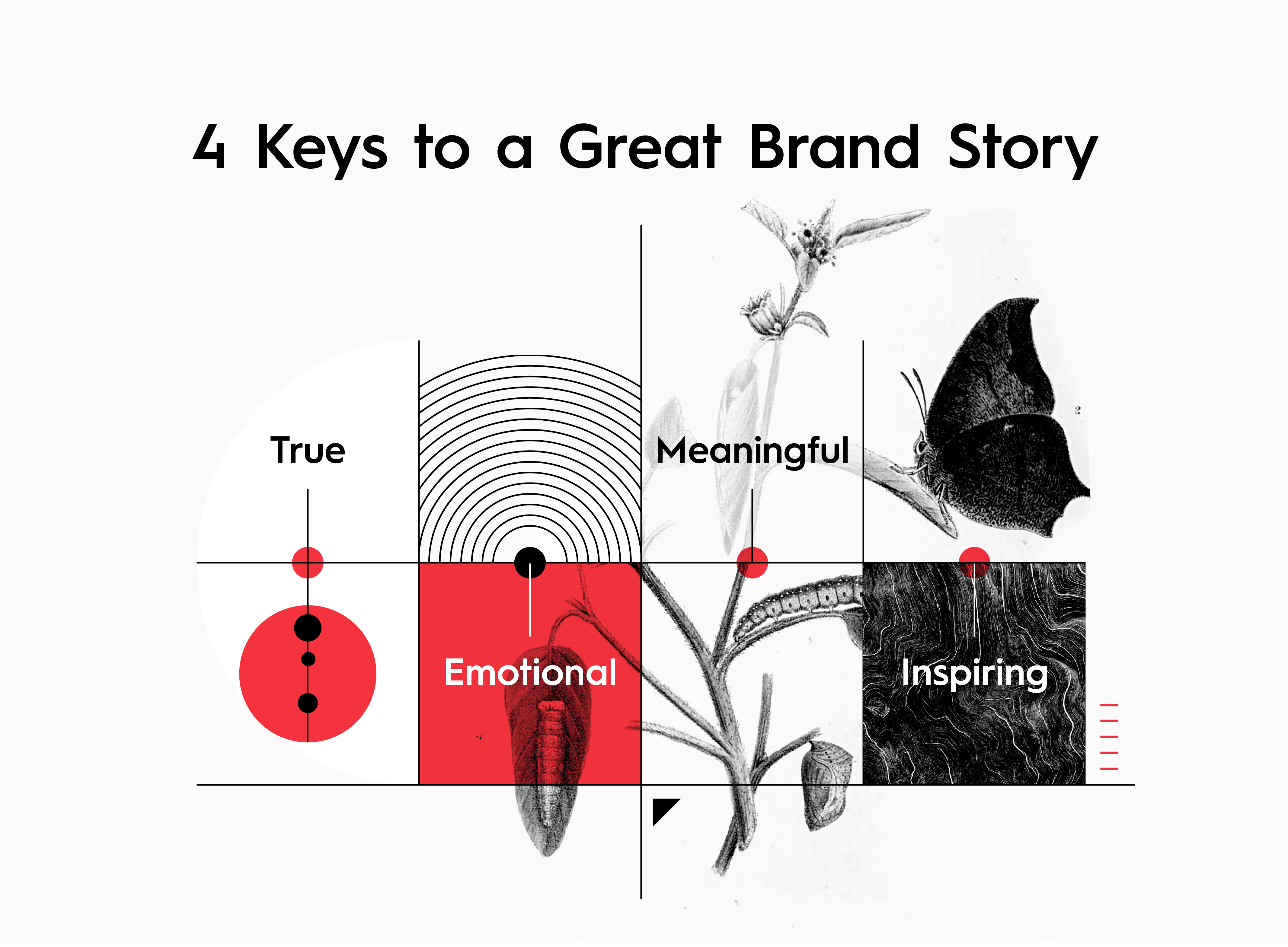
Step 9: Know Your Channels
You might have an awesome content strategy and a ton of awesome stories that people will connect to, but if those stories don’t get in front of the right eyes, you’ll be back to square one. How, then, do you grow and maintain your employer brand awareness? By identifying the best channels to promote your brand.
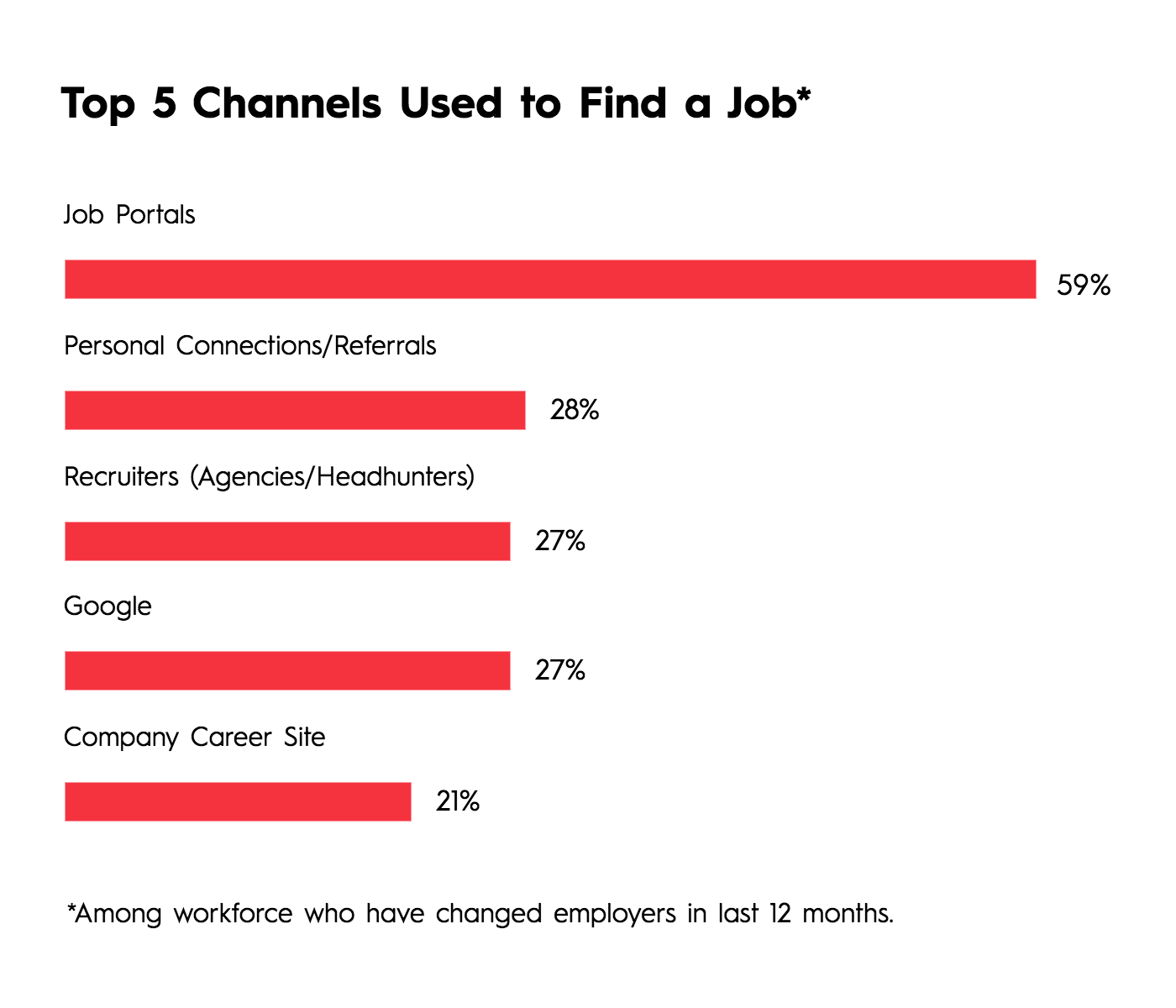
The good news: There are a ton of channels. From Instagram and LinkedIn to Monster and Glassdoor, you can easily promote your brand to job hunters across the Web. The bad news: It can be tough to figure out which ones are best for your audience, and how much time you should devote to each. To be successful, you need to curate a mix you can actually manage.
HOW TO DO IT
To get an overview of your options, see our rundown of employer brand channels, which details what each platform is good for, how much it costs, and how much effort it requires.
Step 10: Measure Your Success
It takes a lot of work to dig into your employer brand, identify your unique traits, and tell great stories about them. Don’t let that work go to waste by executing your content strategy without a way to track its success.
While some aspects of your employer brand are qualitative, you can absolutely define quantitative metrics to help you understand what stories are resonating the most or what channels are most effective.
HOW TO DO IT
To track your success at each stage of the employee journey, follow our guide to measure your employer brand content strategy.
How to Keep Investing in Your Employer Brand
Having an employer brand content strategy is a huge step toward building—and maintaining—a strong employee experience. But telling stories isn’t enough; you need to keep investing, improving, and elevating your brand to keep people engaged. If you’re looking for more ways to do that…
- Bookmark these 50 tools to build a strong employer brand. Whether you’re trying to improve your communication cycles or find fun activities to do with your team, this roundup has the resources you need.
- Remember your remote employees. Many companies now have a distributed workforce, which can make it harder to maintain a strong company culture. You can still keep your team connected—even if you’re behind a screen—with our tips to build your remote culture, along with these 50 tools, tips, and activities to help you do it.
- Help your team bond. No matter what type of work you do, every team faces its own communication challenges. Learn about the different types of creative thinkers (and how each type works best), follow these tips to brainstorm better ideas, and check out the unique ways our team lets loose together if you need some team-building inspiration.
Remember: The more you nurture your employee relationships, the stronger your employer brand will be.
And, of course, if you’re looking for more ways to grow, hit us up. We’d love to help you bring your employer brand to life.





